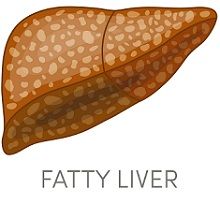Article
The Enormous Cost of Non-Alcoholic Fatty Liver Disease
Author(s):
A new study examined the cost of increasingly prevalent non-alcoholic fatty liver disease in both the United States and Europe and places the bill in the hundreds of billions.

Due in part to widespread obesity and diabetes, non-alcoholic fatty liver disease (NAFLD), already the world’s most common liver affliction, is becoming even more prevalent.
Simply explained as the buildup of fat cells in the liver from sources other than alcohol, NAFLD occurs when 10% or more of the liver’s weight is fat. It can lead to cirrhosis, cancer, and liver failure, and occurring to the American Liver Foundation, it may impact as many as 25% of Americans. Men are at a slightly higher risk than women. In comparison, chronic hepatitis C, perhaps the most well-known liver disorder, affects only 1-2% of the population.
A study published this week in Hepatology looked to place a global price tag on NAFLD’s treatment expense, and the estimates are substantial. The study estimates that 62 million Americans and 52 million people in Germany, France, Italy, and the United Kingdom suffer from NAFLD. Annually, the direct medical cost per person in both the US and Europe, with a total figure of $103 billion in the US and about €35 billion in those four European countries.
These numbers do not include any societal or indirect costs.
NAFLD is not easily detectable, and is often diagnosed when the condition is already quite advanced. Zobair Younossi, MD, MPH, of Inova Fairfax Hospital in Virginia, was one of the authors on the study, and advocates for policy that seeks prevention, earlier diagnosis, and better management and treatment: “This requires a multi-faceted national and possibly international policy to deal with this common, debilitating, and expensive liver disease.”
Related Coverage
New Marker for Risk in Fatty Liver Disease




